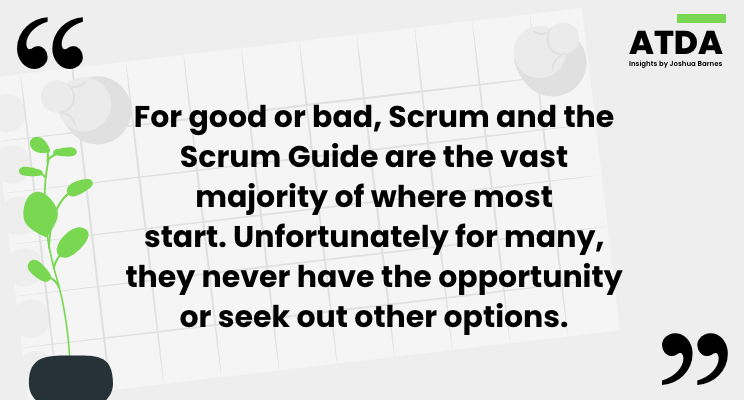
I asked several people covering a range of experience concerning an agile way of working in a few organizations in different industries what they felt agile teams needed to know. It was all very informal, just a way to get some insights and gather my thoughts before discussing @Al Shalloway and @Steve Tendon in our weekly UN-Common Sense live stream.
What I gleaned from asking that simple question was something I did not expect, and on reflection, I think it may stem from the word “agile” team. The majority of the replies I received centered on knowing things related to a timeboxed approach. Whether “sprint” or “iteration,” almost all the replies were in the realm of timeboxes. Few responses included flow – a lean approach. Did your first thoughts focus on an iterative approach and things to know that would support success when looking at the title? Please share your thoughts in a comment.

The item at the top of my list of what agile teams need to know – they have options. So often, the first steps as an individual and as a team member center around a mostly pre-defined path to an agile way of working. For good or bad, Scrum and the Scrum Guide are the vast majority of where most start. Unfortunately for many, they never have the opportunity or seek out other options.
Al, Steve, and I, along with those watching the live stream sharing, had excellent items. The following is a selection of a few that I felt are a great starting point for anyone to reflect on or discuss with others:
- You have options
- Where to start
Agile includes both iterative and flow (lean) approaches - How to continuously improve
- They should challenge/check everything they do for better ways of working (single vs. double-loop learning) – nothing is “scared”
- Have autonomy, but they need to know that their contribution to the value created for the customer is not ALL of the work to create that value
- Know how their work contributes to the value produced and how it fits in with upstream and downstream value-adding activities that are also needed
- That there is no one approach or an ideal approach, the choices that a team makes today may need to change tomorrow based on the context of their situation
- Understand the objectives of the practices and techniques they choose to use – the “why”
- Know that as knowledge workers, they choose how best to get their work done
Watch our recorded live stream on this topic for additional insights:

We help implement lean and agile methodologies to streamline processes in a context-sensitive manner.
Quick Links
Latest Posts
All Things Value Delivery Management – Value Flow Factor 1: Small Items
Is the size of work the minimum scope to provide value a customer can consume? In most cases, the answer is no. However, whether it is a project, business case, charter, work package, epic, etc., we can almost always identify a minimum business increment. Relentless...
Project Manager to Value Delivery Manager
Here we have a common problem. The “agile team” comprises a product owner, team coach, and team members. Far too often, I hear something like, “there are no project managers in agile.” Agile teams are empowered to make decisions and determine how to get the work done....
